Once considered priceless but mysterious treasures, almost lying on the sidelines of life, in recent years, national archives have been gradually actively "entering" into contemporary social life, when the massive archives - heritage documents - are gradually being exploited and supplemented every day.
Collecting memories for posterity
In the past 3 years, through document receptions and exhibitions, exchanges and seminars of national archives, literature and art lovers have had the opportunity to access many valuable and rare documents of many famous artists. These occasions are also rare opportunities for the public to learn more thoroughly about many famous works that have stood the test of time.
Music lovers of many generations may have "memorized" the lyrics and the circumstances of the birth of "Tien Quan Ca", but it was not until the Center announced the documents donated by musician Van Cao's family that most of the public saw for the first time the manuscript and handwritten score of this work. Continuously in the last days of 2023 and early 2024, those interested in musical heritage continued to have the opportunity to "rejoice" when thousands of pages of manuscripts, documents, and artifacts about the life and career of two famous faces of revolutionary music: Musician Doan Nho and musician Hoang Ha were donated by musicians and relatives to the National Archives Center III and were edited, scientifically arranged, and preserved by the Center's staff.

Director of National Archives Center III Tran Viet Hoa and musician Hoang Ha's family visited the personal document preservation area at the Center.
In fact, this is only a very small part of the documents that the National Archives Center III has collected and preserved recently. According to Dr. Tran Viet Hoa, Director of the Center, over the past years, the Center has carried out activities to collect rare documents of typical individuals with great contributions in different areas of social life, including political and social activists, diplomats, scientists, artists in the field of literature and art who have won the Ho Chi Minh Prize, State Prize, International Prize and individuals who are preserving rare documents related to important historical and cultural events of the country. By 2023, it is estimated that the Center will have initially collected and preserved memories of the labor and creative activities of nearly 200 typical individuals, families and clans of Vietnam.
Valuable relics, documents, and manuscripts that have been donated to the archives carry many stories about the author, the work, and social life, and even important evidence of historical moments of the nation. Now, through the above activities, we have the opportunity to look back, see, listen, and learn more thoroughly. As shared by musician Doan Nho, just by looking at the manuscripts he donated to the Center, many people can "read" many things about social life during the resistance period and the days when the country was newly liberated. For example, the brown and black paper that the musicians used was only available during that period. The musicians only had pencils to write with. There are manuscripts that viewers must use a magnifying glass to read.
Ms. Hoang Yen - daughter of musician Hoang Ha and many officials of National Archives Center III also said that just looking at the notebooks that the musician bound himself for use, only longer than a finger or reviewing the letters that the musician and his wife wrote to each other during their lifetime, today's generation will be able to imagine the life of their fathers at that time.

Exhibition booth displaying documents about painter Bui Trang Chuoc.
Affirming that all the works in the artist Bui Trang Chuoc's artistic life have been donated by his family for long-term preservation by the archives, Mrs. Nguyen Thi Minh Thuy, the artist's daughter, also said that thousands of pages of manuscripts and original photo documents have been collected by the family. The sketch set of the Vietnam National Emblem, samples of medals, badges, certificates of merit of all kinds, the design set for the exterior decoration of President Ho Chi Minh's mausoleum, money samples, postage stamp samples, and many graphic publications that directly serve culture and social life... have been carefully preserved, kept, and protected by the family over a long period of time, in the most cramped and difficult space during the war, evacuation, until peace and national liberation, moving residence many times, and even after 1992, when the artist passed away.
Before trusting the documents to the Center, artists, scientists and relatives were very careful and spent a long time selecting documents and exploring preservation conditions and promoting the value of the documents. To bring the documents of musician Hoang Ha to the Center as they are today, the family and archivists had to coordinate for nearly 7 years. The documents of musician Doan Nho at the Center began to form more than 10 years ago. For the documents of painter Bui Trang Chuoc, it took nearly 20 years.
Living proof of history, country, people
According to the State Records and Archives Department, the above-mentioned documents and materials collected by the National Archives Center III are only a part of the massive amount of documents collected and preserved by the National Archives Centers over the past time. Previously, implementing the project "Collecting precious and rare documents of Vietnam and about Vietnam", from 2012 to 2020, in the country alone, the centers collected 3,709 ancient documents of the Cham people; 20 original documents, 24,133 pages of copies of Han-Nom documents on personal biographies, genealogies, family records, certificates, royal decrees...; photographed 8,959 carved faces of woodblock documents recording Buddhist scriptures and medical books. These documents reflect the origin, development process, material and spiritual life, customs and practices of Vietnamese people through historical periods, and documents about families and clans that have left many marks in Vietnamese history in the provinces and centrally-run cities.

Original documents of many famous musical works by musician Doan Nho were published in early 2024.
The Centers have also collected documents reflecting the lives and careers of 20 generals of the Vietnam People's Army, 25 outstanding individuals in many fields. In addition, there are tens of thousands of documents related to Vietnam's sovereignty over seas and islands, the period of building socialism in the North, the Geneva Conference, the Paris Conference and the campaigns in the resistance war against the US (1954 - 1975); interviews, audio and video recordings of 14 witnesses (480 minutes) about many historical events. The precious and rare documents that have been collected, assembled and well managed have contributed to enriching the source of documents and materials serving the research of history, national culture or the research of the life and career of the country's cultural celebrities. However, the number of documents collected during this period is still very modest compared to the reality of valuable and rare archival documents currently being kept by individuals, families, clans in the country and archival agencies and organizations abroad.

Many visitors were curious about the sketch of the Vietnamese national emblem by artist Bui Trang Chuoc.
In general, up to now, the National Archives Centers under the State Records and Archives Department are preserving more than 35 km of documents, including many precious and rare documents, expressed on materials/materials such as: paper, photos, magnetic tapes, wood... formed during the operation of central agencies and organizations under different regimes and of typical individuals, families, and clans, reflecting the economic, political, cultural, and social life of Vietnam from the 15th century to the present. According to Dr. Tran Viet Hoa, in this heritage, there are documents of special value. That is the Nguyen Dynasty Woodblocks (preserved at the National Archives Center IV) which was recognized by UNESCO as a World Documentary Heritage in 2009, including many Han-Nom woodblocks reflecting all aspects of social life, history, and geography of Vietnam under the Nguyen Dynasty.
The Nguyen Dynasty's Royal Records (preserved at National Archives Center I) was recognized by UNESCO as a Documentary Heritage of the Asia-Pacific region in 2014 with dual historical and legal value, being the only administrative document block still preserved of the last feudal dynasty of Vietnam. At National Archives Center III, there is a Collection of Decrees of the President of the Provisional Government of the Democratic Republic of Vietnam (from August 30, 1945 to February 28, 1946) demonstrating the mettle of the young revolutionary government under the leadership of President Ho Chi Minh in the early days of the successful August Revolution and the Collection of Vietnamese National Emblem samples by artist Bui Trang Chuoc was recognized as a national treasure. Thus, it can be seen that the documents stored at the National Archives Centers are extremely rich and diverse in form and content, occupying a large volume, comprehensively reflecting the development process of national history through historical periods.
Along with the implementation of the program "Announcing national archives to serve the construction, socio-economic development, and protection of national sovereignty", instead of being only preserved in national archives, the above-mentioned massive heritage is being actively exploited.
Director of the State Records and Archives Department Dang Thanh Tung once shared that each year, the National Archives Centers serve more than 5,000 domestic and foreign readers; issue copies and certify more than 100,000 pages of documents; welcome more than 30,000 visitors to the exhibitions. Over 100 exhibitions and displays of archival documents, including many large-scale international exhibitions, attract a large number of visitors. Publications and archival documentaries are created with diverse and rich content, promptly serving important events of the country and localities, serving the propaganda work on the country's sovereignty over seas and islands.
Source




![[Photo] Keep your warehouse safe in all situations](https://vphoto.vietnam.vn/thumb/1200x675/vietnam/resource/IMAGE/2025/10/1/3eb4eceafe68497989865e7faa4e4d0e)

![[Photo] Hanoi morning of October 1: Prolonged flooding, people wade to work](https://vphoto.vietnam.vn/thumb/1200x675/vietnam/resource/IMAGE/2025/10/1/189be28938e3493fa26b2938efa2059e)
![[Photo] President of the Cuban National Assembly visits President Ho Chi Minh's Mausoleum](https://vphoto.vietnam.vn/thumb/1200x675/vietnam/resource/IMAGE/2025/10/1/39f1142310fc4dae9e3de4fcc9ac2ed0)
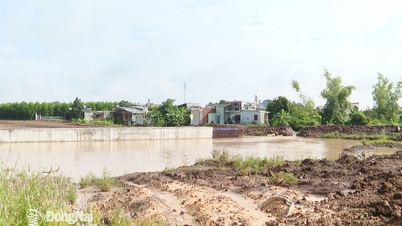

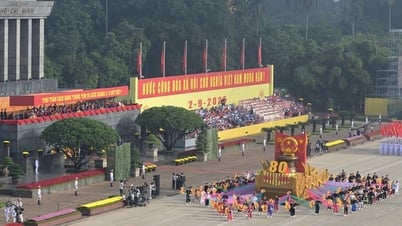

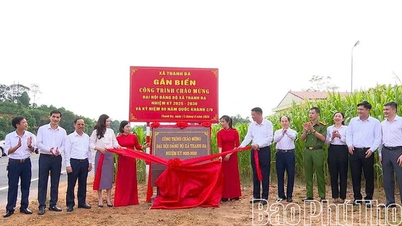



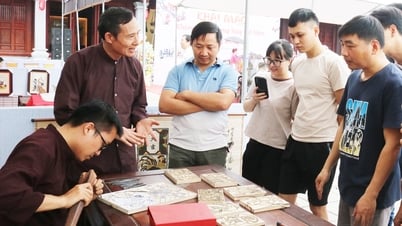

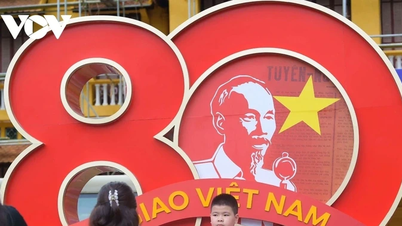
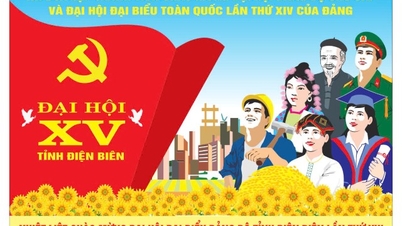
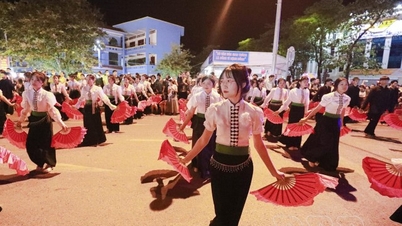


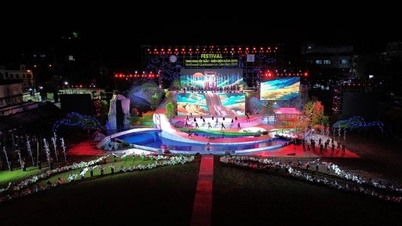






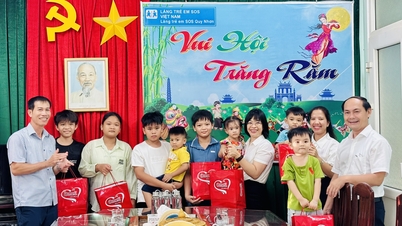






























































Comment (0)